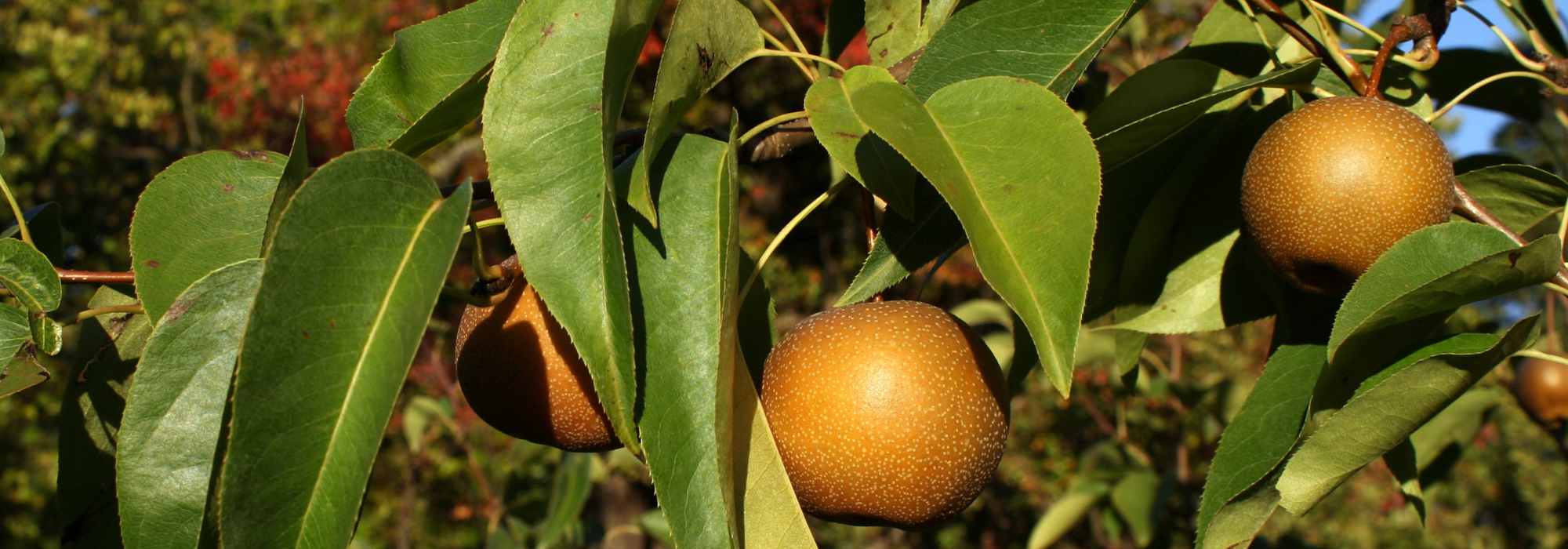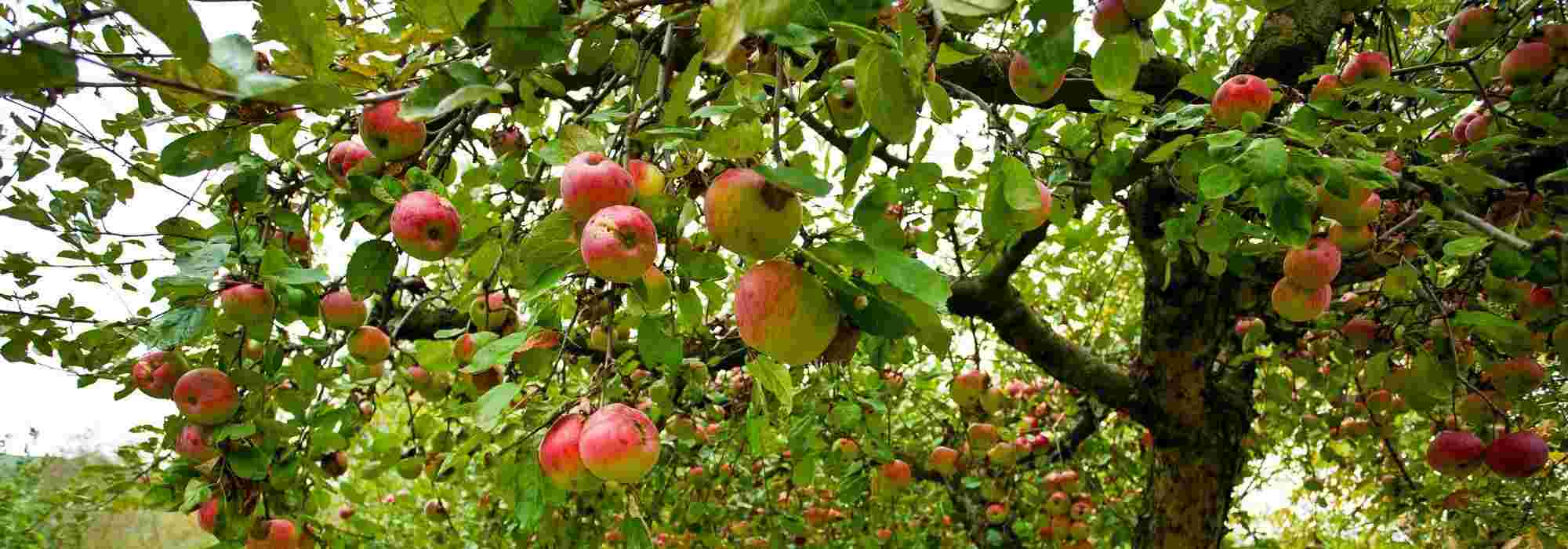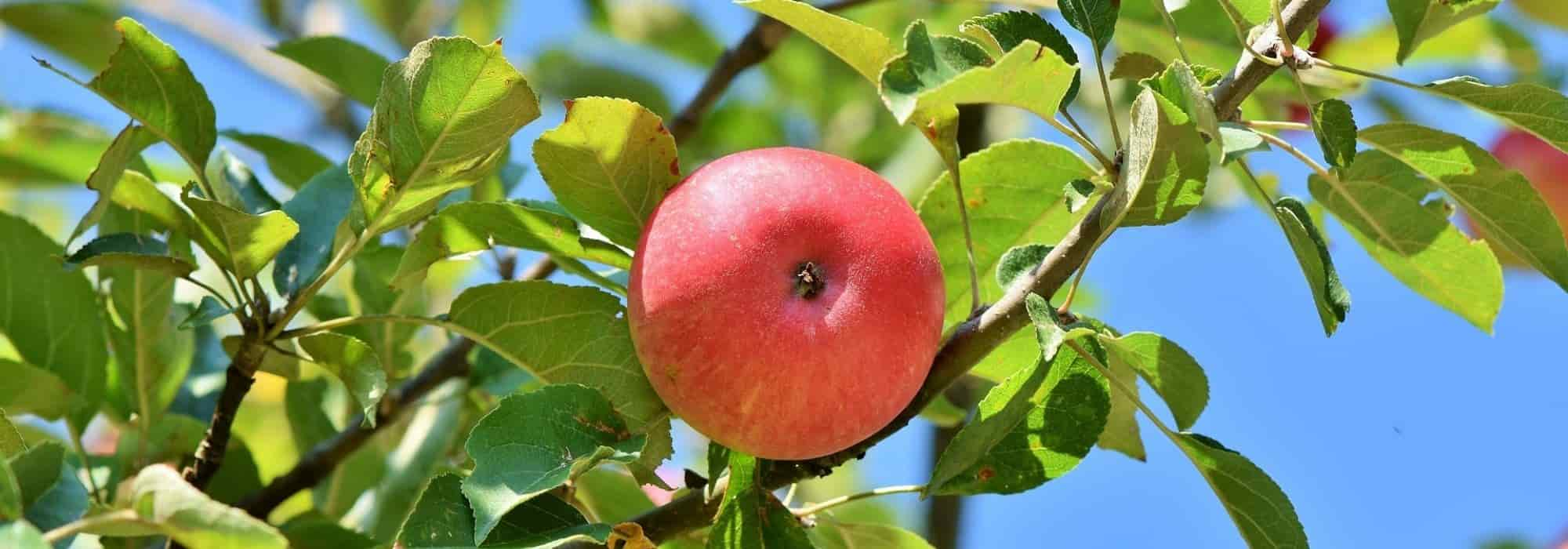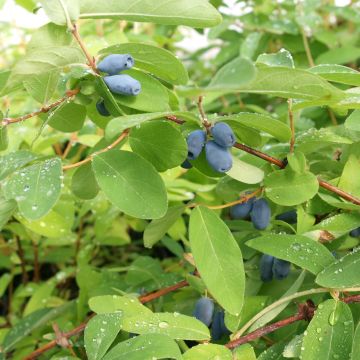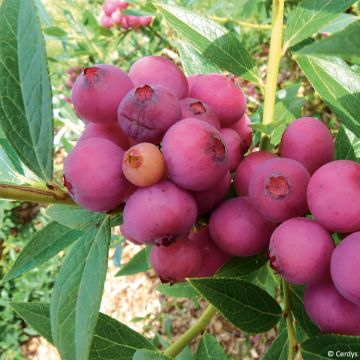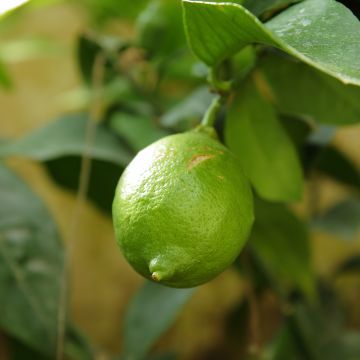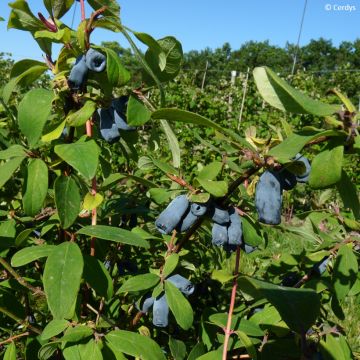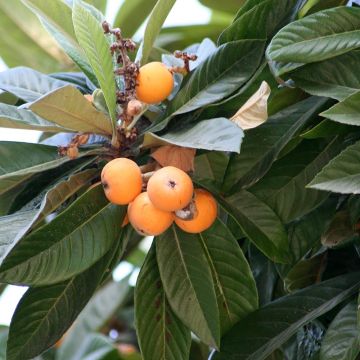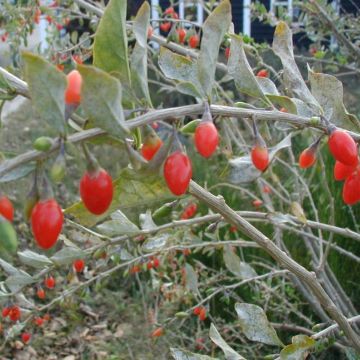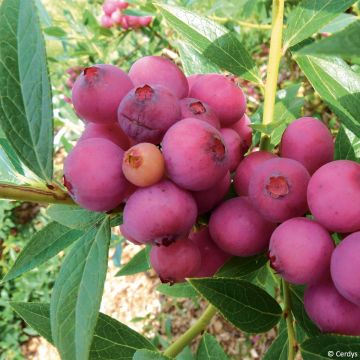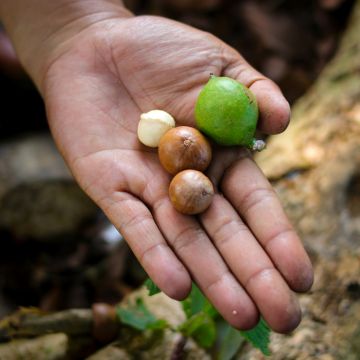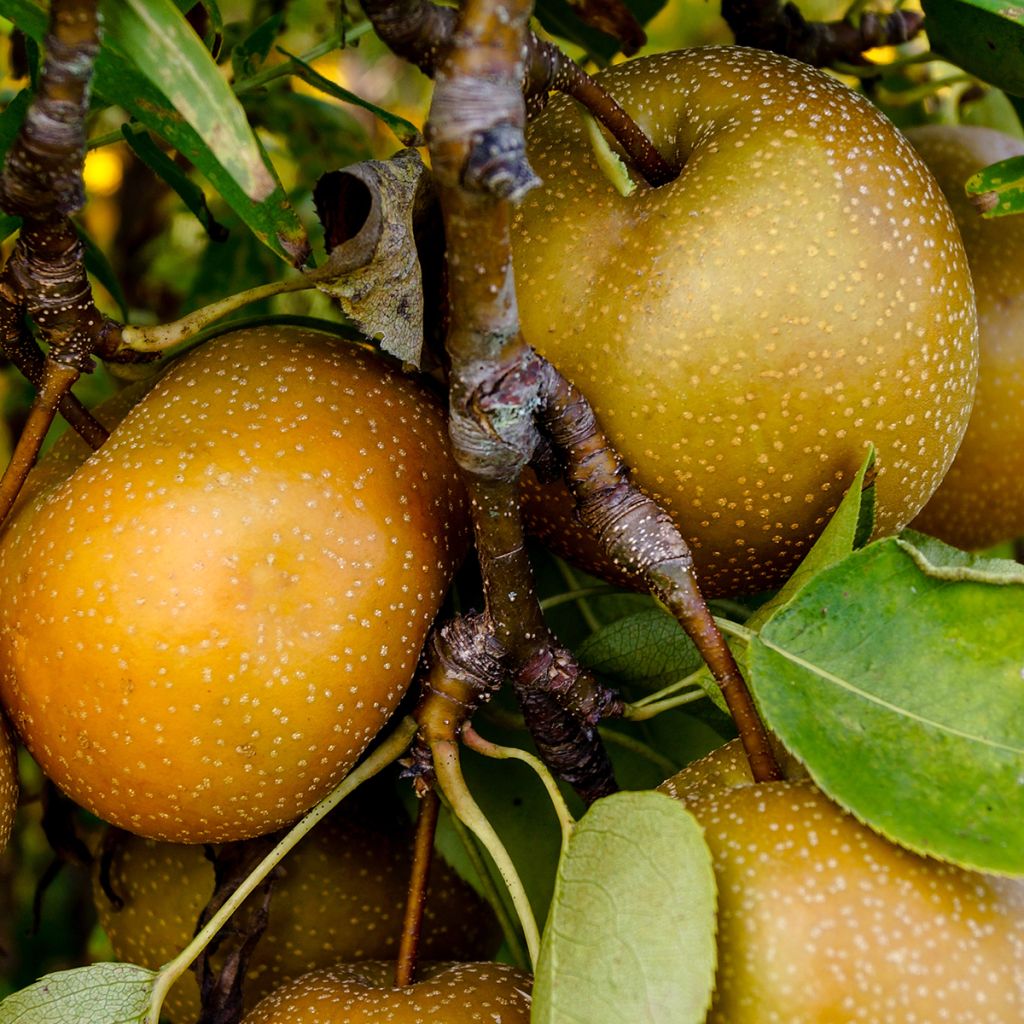

Pyrus pyrifolia - Asian Pear
Pyrus pyrifolia - Asian Pear
Pyrus pyrifolia
Asian Pear, Nashi Pear, Sand Pear, Chinese Pear, Korean Pear, Japanese Pear, Taiwan Pear
Nashi received in good condition and well packaged. I am satisfied with this purchase. Analyse du texte traduit : Le texte traduit est correct sur le plan linguistique. Il n'y a pas d'erreurs d'orthographe, de fautes de grammaire, de problèmes de structure ou de tournures inappropriées. Le ton du texte original a été conservé dans la traduction.
Vilascay , 08/01/2024
Special offer!
Receive a €20 voucher for any order over €90 (excluding delivery costs, credit notes, and plastic-free options)!
1- Add your favorite plants to your cart.
2- Once you have reached €90, confirm your order (you can even choose the delivery date!).
3- As soon as your order is shipped, you will receive an email containing your voucher code, valid for 3 months (90 days).
Your voucher is unique and can only be used once, for any order with a minimum value of €20, excluding delivery costs.
Can be combined with other current offers, non-divisible and non-refundable.
Home or relay delivery (depending on size and destination)
Schedule delivery date,
and select date in basket
This plant carries a 6 months recovery warranty
More information
We guarantee the quality of our plants for a full growing cycle, and will replace at our expense any plant that fails to recover under normal climatic and planting conditions.
Description
Pyrus pyrifolia, or Nashi pear in Dutch, is a hardy species (up to -15°C (5°F)), forming a small tree, very similar to the common pear tree. It produces small-sized fruits, called nashis, with a subglobose shape, rounded like an apple. Its skin is slightly rough, fairly thin, golden bronze, taking on bronze-brownish hues when ripe, and marked all over its surface with white dots. It is a super fruit with exceptional nutritional qualities. The harvest takes place from late August to late September. The fruits are consumed as they ripen and can be stored for a few weeks in a cool place. Surprising and pleasant in the mouth, the nashi is eaten raw. Cooked, it lends itself well to many recipes for jams, compotes, pastries, and desserts. This Japanese Pear prefers a sunny exposure, in filtering, moist, deep, rich, and non-calcareous soil.
Pyrus pyrifolia or serotina, more commonly known as apple-pear, Japanese pear, Asian pear, or sand pear, belongs to the Rosaceae family, like the pear tree or the apple tree. It originates from China and Japan. "Nashi" is a Japanese word that can be translated as "pear" which refers to both the shrub and the fruit. Although the Nashi is not the result of a cross between an apple tree and a pear tree, its fruits are sometimes called "apple-pear" as they resemble apples while having the texture of pears.
It is a very productive species, with rapid fruiting and abundant and regular fruit production. It forms a small tree with a fairly erect framework that can reach 4 to 5m (13 to 16ft) in height, producing many slightly arched branches with a spreading habit. Its habit is well suited to tall forms (on a stem) or low forms (in a goblet shape). Its deciduous foliage is composed of large, alternate, lanceolate, shiny dark green leaves, 7 to 10cm (3 to 4in) long, taking on autumnal shades of yellow-orange-red before falling. Flowering occurs in April, which usually protects it from frost. The melliferous single white flowers, 3 to 4cm (1 to 2in) in diameter, are grouped in umbels. They can be destroyed by frost from -2 to -3°C (28.4 to 26.6°F). It is a hardy tree that tolerates temperatures around -15°C (5°F), suitable for cultivation in all regions. This Japanese Pear is said to be self-sterile or self-incompatible; the flowers cannot fertilise themselves. That is why the presence of other pear trees nearby, which flower at the same time, is necessary for cross-pollination, and thus increase the number of fruits. For example, the varieties Nashi Hosui, Nashi Shinseiki, or the Williams pear trees are good pollinators. It can also be a good pollinator for other pear trees.
The harvest begins around mid-August, and continues until September. The fruits are consumed as they ripen. The nashi is ripe when the skin is smooth and taut, and the fruit is soft around the stalk. The nashi can be eaten raw or cooked. Raw, it is pleasant to bite into with the skin, which sets it apart from other fruits. It is appreciated in jams, compotes, pastries (pies, crumbles, etc.), and desserts where it pairs well with chocolate or rhubarb or with panna cotta, not to mention fruit salads. It is important to harvest the fruits when they are ripe, as they do not ripen further after harvest.
The nashi is refreshing, thirst-quenching, and rich in water. Low in calories, it is rich in potassium and magnesium, with a significant copper content. Its content of vitamins C and K, antioxidants, and fibres makes the Japanese pear a health asset. It is invigorating, energising, and rehydrating. The fruits can be stored from a few weeks to three months after harvest. Store in a cool place, protected from light at a temperature around 8 to 10°C (46.4 to 50°F) or in a cold room, sealed off from outside air at a temperature of 1 to 3°C (33.8 to 37.4°F).
The Nashi is easy to grow. It likes moist and deep soils, but it fears excessively filtering and calcareous soils. Pruning for ventilation, by removing some branches in the centre of the tree, will admit light and give the fruits a beautiful colour. This will also limit the occurrence of diseases. It finds its place in an orchard or in an ecological country hedge. Appreciated for its fruit qualities, its elegant habit and autumn colours also make it a decorative addition to the garden. It is a real plus in the garden.
Plant habit
Fruit
Flowering
Foliage
Botanical data
Pyrus
pyrifolia
Rosaceae
Asian Pear, Nashi Pear, Sand Pear, Chinese Pear, Korean Pear, Japanese Pear, Taiwan Pear
Cultivar or hybrid
Planting and care
Plant in a location sheltered from prevailing winds, preferably in full sun. The Nashi thrives in moist, fertile soils without stagnant humidity, but does not appreciate overly dry or calcareous soils. Plant between October and March, outside of freezing periods. Container-grown trees can be planted all year round, except during periods of extreme heat or frost.
To plant, loosen the soil deeply, remove rocks and unwanted weeds. Add some gravel to improve drainage if necessary. Dig a wide planting hole at least 3 times the size of the root ball. Set aside the bottom soil and the surface soil separately. Mix crushed horn and organic matter (potting soil, compost) with the bottom soil and pour this mixture into the bottom of the planting hole. Place the root ball, cover with the surface soil without burying the graft collar, and firm down. Water generously (about 10 litres). It may be useful to stake the tree by installing a guying system: plant 3 stakes in a triangle 50cm (20in) around the trunk, and connect them with pieces of wood. Protect the bark with a piece of rubber, for example, and attach the stakes to the trunk with wire. It is also possible to espalier it on a support (U-shaped espalier or Verrier espalier, for example).
In terms of maintenance, apply well-rotted compost on the surface every autumn. In winter, add a small shovelful of wood ash, rich in potash, to improve fruiting. If necessary, hoe at the base of the tree. Water regularly, depending on your climate, during the first two or three years.
The Nashi can be susceptible to scab (brown spots on leaves), brown rot (wilting of flowers and rotting of fruit on the tree), and powdery mildew (white coating on leaves). As for pests, the codling moth or fruit worm, a small caterpillar, can be controlled by installing bird and bat nesting boxes, by placing corrugated cardboard strips along the trunk, and by bagging the fruit in brown kraft paper. In case of aphid infestation, spray a mixture of water and black soap.
Planting period
Intended location
Care
Planting & care advice
-
, onOrder confirmed
Reply from on Promesse de fleurs
Similar products
Haven't found what you were looking for?
Hardiness is the lowest winter temperature a plant can endure without suffering serious damage or even dying. However, hardiness is affected by location (a sheltered area, such as a patio), protection (winter cover) and soil type (hardiness is improved by well-drained soil).

Photo Sharing Terms & Conditions
In order to encourage gardeners to interact and share their experiences, Promesse de fleurs offers various media enabling content to be uploaded onto its Site - in particular via the ‘Photo sharing’ module.
The User agrees to refrain from:
- Posting any content that is illegal, prejudicial, insulting, racist, inciteful to hatred, revisionist, contrary to public decency, that infringes on privacy or on the privacy rights of third parties, in particular the publicity rights of persons and goods, intellectual property rights, or the right to privacy.
- Submitting content on behalf of a third party;
- Impersonate the identity of a third party and/or publish any personal information about a third party;
In general, the User undertakes to refrain from any unethical behaviour.
All Content (in particular text, comments, files, images, photos, videos, creative works, etc.), which may be subject to property or intellectual property rights, image or other private rights, shall remain the property of the User, subject to the limited rights granted by the terms of the licence granted by Promesse de fleurs as stated below. Users are at liberty to publish or not to publish such Content on the Site, notably via the ‘Photo Sharing’ facility, and accept that this Content shall be made public and freely accessible, notably on the Internet.
Users further acknowledge, undertake to have ,and guarantee that they hold all necessary rights and permissions to publish such material on the Site, in particular with regard to the legislation in force pertaining to any privacy, property, intellectual property, image, or contractual rights, or rights of any other nature. By publishing such Content on the Site, Users acknowledge accepting full liability as publishers of the Content within the meaning of the law, and grant Promesse de fleurs, free of charge, an inclusive, worldwide licence for the said Content for the entire duration of its publication, including all reproduction, representation, up/downloading, displaying, performing, transmission, and storage rights.
Users also grant permission for their name to be linked to the Content and accept that this link may not always be made available.
By engaging in posting material, Users consent to their Content becoming automatically accessible on the Internet, in particular on other sites and/or blogs and/or web pages of the Promesse de fleurs site, including in particular social pages and the Promesse de fleurs catalogue.
Users may secure the removal of entrusted content free of charge by issuing a simple request via our contact form.
The flowering period indicated on our website applies to countries and regions located in USDA zone 8 (France, the United Kingdom, Ireland, the Netherlands, etc.)
It will vary according to where you live:
- In zones 9 to 10 (Italy, Spain, Greece, etc.), flowering will occur about 2 to 4 weeks earlier.
- In zones 6 to 7 (Germany, Poland, Slovenia, and lower mountainous regions), flowering will be delayed by 2 to 3 weeks.
- In zone 5 (Central Europe, Scandinavia), blooming will be delayed by 3 to 5 weeks.
In temperate climates, pruning of spring-flowering shrubs (forsythia, spireas, etc.) should be done just after flowering.
Pruning of summer-flowering shrubs (Indian Lilac, Perovskia, etc.) can be done in winter or spring.
In cold regions as well as with frost-sensitive plants, avoid pruning too early when severe frosts may still occur.
The planting period indicated on our website applies to countries and regions located in USDA zone 8 (France, United Kingdom, Ireland, Netherlands).
It will vary according to where you live:
- In Mediterranean zones (Marseille, Madrid, Milan, etc.), autumn and winter are the best planting periods.
- In continental zones (Strasbourg, Munich, Vienna, etc.), delay planting by 2 to 3 weeks in spring and bring it forward by 2 to 4 weeks in autumn.
- In mountainous regions (the Alps, Pyrenees, Carpathians, etc.), it is best to plant in late spring (May-June) or late summer (August-September).
The harvesting period indicated on our website applies to countries and regions in USDA zone 8 (France, England, Ireland, the Netherlands).
In colder areas (Scandinavia, Poland, Austria...) fruit and vegetable harvests are likely to be delayed by 3-4 weeks.
In warmer areas (Italy, Spain, Greece, etc.), harvesting will probably take place earlier, depending on weather conditions.
The sowing periods indicated on our website apply to countries and regions within USDA Zone 8 (France, UK, Ireland, Netherlands).
In colder areas (Scandinavia, Poland, Austria...), delay any outdoor sowing by 3-4 weeks, or sow under glass.
In warmer climes (Italy, Spain, Greece, etc.), bring outdoor sowing forward by a few weeks.






























